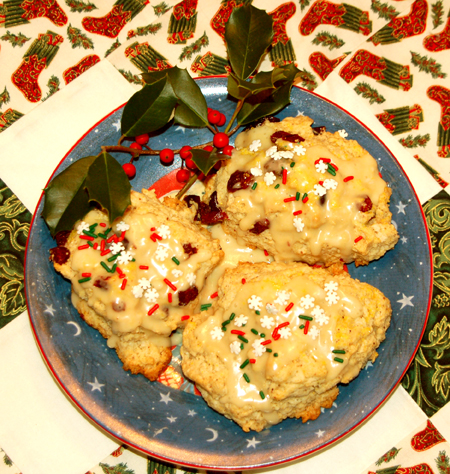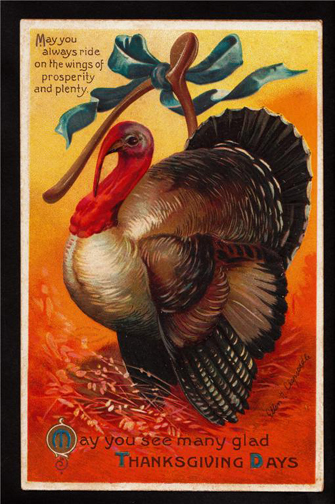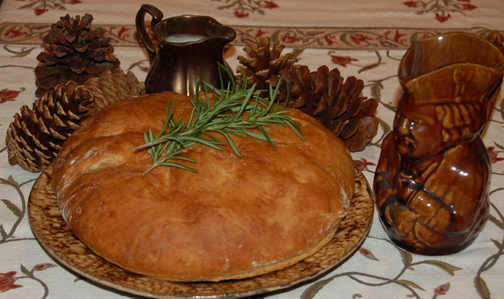
Judith Maloney (Courtesy of West County Cider/CISA)
A strong proponent of November in our western Massachusetts hilltowns is Judith Maloney of West County Cider in Shelburne. Along with her husband Terry and a group of sweet- and hard-cider enthusiasts, Judith founded Cider Days in 1994. This tradition of celebrating the apple harvest and sharing cider, which takes place the first weekend in November, is now a highlight of autumn in Franklin County.
To Judith, Cider Days don’t just honor the harvest. They also keep a way of life alive. She told me last week that early on she saw this festival as “something that would keep the apple trees in the ground—because the economics of apples have changed very much over the last 20 years. No longer do people buy apples to store over the winter. They buy them at the supermarket, and [the apples] come from Australia and New Zealand.”
In contrast, says Judith, Cider Days preserve local apples and cider–and the trees that produce them. “We’re so lucky to have these trees,” she said with passion. “A lot of them have great age on them. [And] there’s a lot of knowledge among the orchardists along the valley and in the hills. It’s great that we can go onto the next season with that knowledge still spreading.”
One of this year’s Cider Days speakers enthusiastically takes his celebration on to that next season, when the trees have yielded all their fruit and the snow has settled in. Michael Phillips of Lost Nation Orchard in Groveton, New Hampshire, takes a group deep into the woods on a dark night once a year to mark “old” Epiphany (January 17, the 12th night after Christmas in the old Julian calendar). There the group sings, dances, salutes the apple trees that will blossom in spring, and shares warm refreshments, including wassail (spiced cider-y punch) and slices of wassail pie.
Here are the lyrics to the song the wassailers sing, courtesy of Michael Phillips:
Oh apple tree, we’ll wassail thee in hope that thou will bear.
The Lord does know where we shall be to be merry another year.
To blow well and to bear well, and so merry let us be:
Let every man drink up his cup, here’s health to the old apple tree.
To blow well and to bear well, and so merry let us be:
Let every man drink up his cup, here’s health to the old apple tree.
(Repeat all twice more)
Apples now–
Hats full,
Caps full,
Barrels full,
Three bushel bags full,
Barn floors full,
And even a little heap under the stairs.
Hip, Hip, Hooray! Hip, Hip, Hooray! Hip, Hip, Hooray!
In his book The Apple Grower, Michael explains that he likes to greet the season with gusto. He writes, “[O]ur gathering often occurs on the coldest night of the winter. There’s certainly an almost mystical power in sharing apple custom with forty dear friends as you dance around the chosen tree at thirty degrees below zero!”
Now, there’s someone who knows how to embrace the season’s darkness.
If you’d like more information about Cider Days, visit their web site, http://www.ciderday.org/. Meanwhile, here are a couple of recipes that take advantage of the season’s cider bounty. Be sure to bow to an apple tree as you get ready to eat them; then go indoors and enjoy the cozy warmth and light of your house.

The Green Emporium (Courtesy of the Green Emporium)
Cider Mussels Emporium
This recipe comes from the fertile culinary mind of Michael Collins, chef at the Green Emporium in Colrain and a longtime fan of Cider Days. The restaurant has just reopened as a pizza/pasta parlor. Michael may have simplified his menu, but he hasn’t lost his creativity: he has a terrific new apple pizza!
Ingredients:
3 to 4 chopped shallots
3 tablespoons extra-virgin olive oil
1 clove garlic, minced
2 cups hard cider
3 pounds mussels, cleaned and de-bearded (discard opened or cracked mussels)
1/4 cup crumbled blue cheese (of your choice; Gorgonzola is nice here, or just plain blue cheese)
chopped parsley as needed for garnish
Instructions:
Sauté the shallots in the olive oil until translucent, about 5 minutes. Just before the shallots become translucent, pop in the garlic pieces, but be careful not to burn the garlic.
Add the hard cider, and simmer the mixture until the cider is reduced in half.
Add the mussels, and cover to steam until the mussels open. (This will only take a couple of minutes so be sure to check frequently.) Take the pan off the heat, crumble the cheese over all, and transfer to a serving dish. Garnish with parsley. Serves 6 to 8.

- Michael Phillips at Cider Days (Courtesy of Carolyn Halloran/West County Independent)
Lost Nation Traditional Cider Pie
Michael Phillips serves a slice of this pie (indoors!) to his guests each winter at the end of his orchard wassailing ceremony. He also recommends it for Thanksgiving and other special occasions.
The cider jelly required is a reduction of sweet cider. Boil 3 cups of cider until you have only 1/2 cup left; what remains is what you will need for this recipe.
Ingredients:
3/4 cup sugar
3 tablespoons cornstarch
1 pinch salt
1/2 cup cider jelly
1/2 cup boiling water
1 egg, beaten
1 tablespoon melted butter
2 cups sliced apples
pastry for a 2-crust, 9-inch pie
Instructions:
Preheat the oven to 425 degrees. In a bowl, combine the sugar, cornstarch, and salt. Add the cider jelly and water, and blend. Stir in the egg and melted butter. Place the apple sices on the bottom pie crust in a pie plate, and top with the cider mixture. Put the top crust over all, cutting a few slashes in it. Bake for 40 minutes. Serves 6 to 8.
 Pie is a grand old tradition for the holidays. There’s love in every pie crust–particularly in our home, where my 90-year-old mother Jan is the designated crust roller.
Pie is a grand old tradition for the holidays. There’s love in every pie crust–particularly in our home, where my 90-year-old mother Jan is the designated crust roller.














